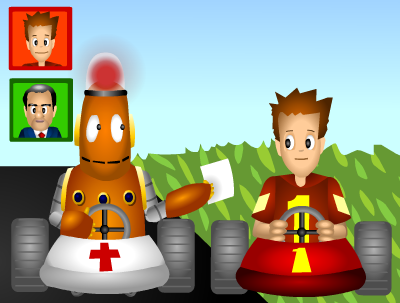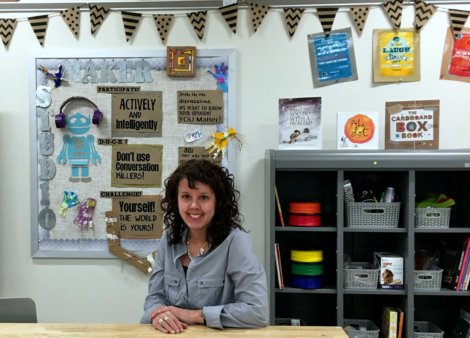Guest Blog: Adventures in Gaming
Posted by allisyn on
I met Sherri Dodd via a webinar on Video Games in the Classroom, and was hoping she’d share all the cool things she’s doing with her students as a guest blogger! Thanks, Sherri.
My experience implementing game design is probably not very typical. I work in a small, private, PK-8, 1:1 tablet, Montessori school. Because of that I have a great deal of flexibility and latitude in what, when, and how I implement – and our students are accustomed to working independently with very little teacher direction.
I discovered the National STEM Video Game Challenge last week and decided to do it. With the tight deadline, I realized that I needed to work quickly. After reviewing the site, I chose Gamestar Mechanic because it is web-based and the other tools required a download. I downloaded the teacher’s guide and panicked at the amount of time recommended to walk through the entire curriculum. I decided I would just have to turn them loose. I created a teacher account and started signing up students.
We are still working out some of the bugs with the sign-up process for students under age 13. As for the rest of my students – several of them have already published games. They flew through the curriculum much faster than I had anticipated (they are obsessed). Next week I will follow up with an actual lesson to verbally articulate the key points of game design – but the curriculum in Gamestar Mechanic was very effective in teaching it to them at a very practical and hands-on level. They get it. We have started the brainstorming process for the STEM part of the challenge, and essentially what is happening is that my students’ creative powers are running way ahead of their game design powers – which may be a sign that I need to work with a more advanced platform, but with the download required I will need to wait until next year.
Fast forward a month! I have set up a wiki and students are posting updates and other information there, such as identifying game developers who are lurking on Gamestar Mechanics, pointing out really great games to each other, and asking technical questions about how to make sprites behave, and also how to obtain new ones. To practice their digital citizenship, I have made a class assignment requiring students to make constructive comments on at least three games authored by people who do not attend our school. Constructive comments must contain very specific details as to why a game is good, or offer up a suggestion as to how to improve a game. The hope is that others in the Gamestar Community will respond in kind. In addition, I provided students with the link to the BrainPop movie about Video Games to introduce them to some of the more formal language used in game development. They are required to complete a graded quiz with a 10/10 score and submit it to my OneNote grade book.
Also, by way of observation – although many people assume that playing an online single-person game is a solitary and socially isolating activity, I am witnessing something completely different. I work with my students in groups of 6 – 8, and they sit together facing each other in a t-shaped table arrangement. While they are playing and creating games they talk to each other constantly. They describe the action in their game, ask how to make something work, get verbal directions on how to find each other’s new games online, remark on comments that have been made online, etc. Playing games is definitely a socially engaging activity for my students – they are meeting in person and online simultaneously, and loving it.
Sherri Dodd
Director, Educational Technology
Milwaukee Montessori School
www.milwaukee-montessori.org















